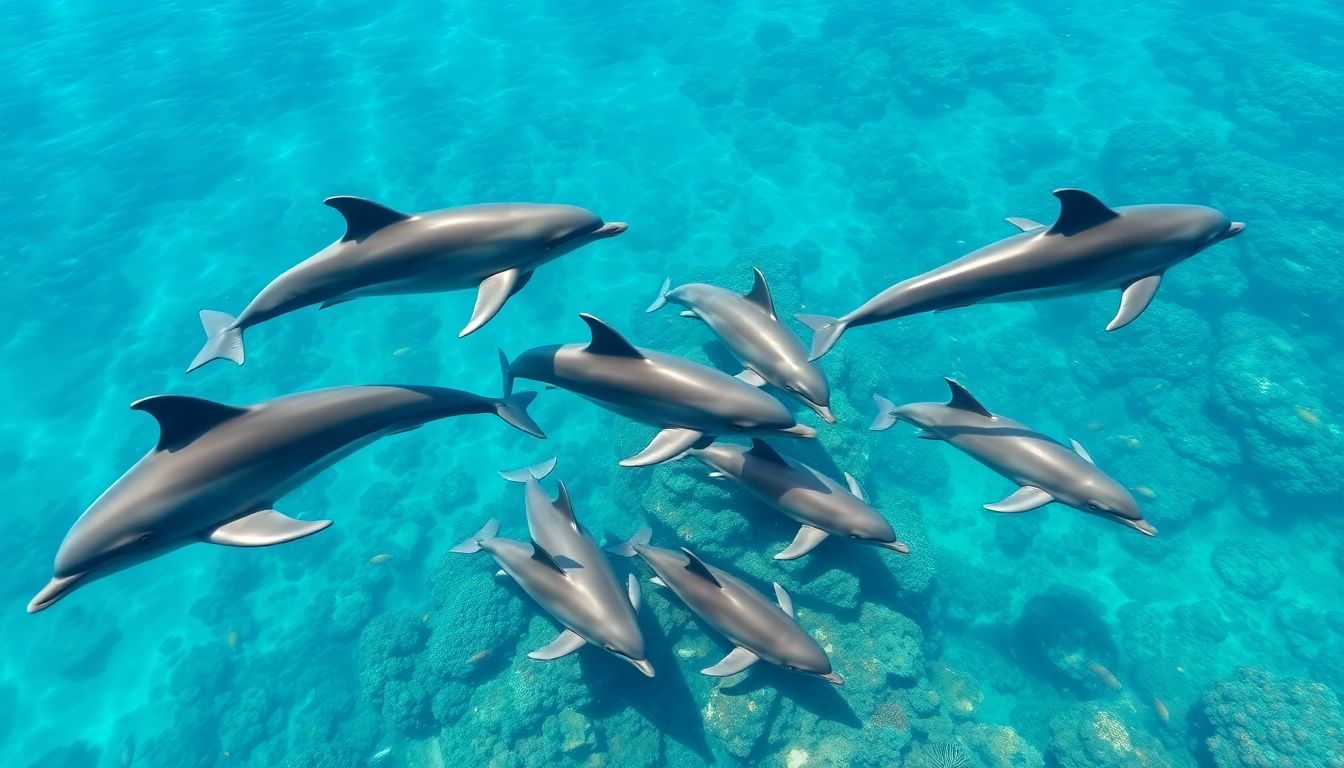The Ocean’s Dynamic Duo
Dolphins and porpoises are two of the most fascinating creatures found in our oceans. Both belong to the cetacean family and often share habitats, making them easy to confuse. However, despite their similarities, these marine mammals boast distinct features that set them apart. Knowing how to tell them apart not only enhances your appreciation of marine life but also deepens your understanding of ocean ecosystems.
[Click here for one of the best books on dolphins. Great purchase for all dolphin lovers!]
Body Shape and Size: Key Distinguishing Features
Dolphin Body Shape: Sleek and Streamlined Profiles
Dolphins are typically characterized by their long, slender bodies. Their sleek profiles allow them to swim gracefully through the water. They often have a pronounced beak, which gives them that classic dolphin appearance.
Porpoise Body Shape: Stockier and More Robust Builds
In contrast, porpoises have a stockier and more robust build. Their bodies are rounder, making them appear more solid than dolphins. They usually lack the elongated snout characteristic of their dolphin counterparts.
Size Comparisons: Average Lengths and Weight Differences
- Dolphins:
- Average Length: 6 to 12 feet
- Weight: 300 to 1,400 pounds
- Porpoises:
- Average Length: 5 to 7 feet
- Weight: 100 to 500 pounds
Fin and Flipper Analysis: A Closer Look at Anatomy
Dorsal Fin Shape: The Most Noticeable Difference
One of the most noticeable differences lies in their dorsal fins. Dolphins have tall, curved dorsal fins, while porpoises have smaller, triangular fins. This feature can be a quick way to identify which species you may be observing.
Flipper Size and Shape: Subtle yet Significant Clues
Dolphin flippers are long and slender, whereas porpoise flippers are shorter and broader. These variations can be one of the easiest ways to distinguish between the two while observing them in the wild.
Fluke Shape: Analyzing the Tail Flukes for Identification
The tail flukes also differ; dolphin flukes are generally larger and more crescent-shaped, while porpoise flukes are smaller and more triangular. This distinction adds another layer to identifying these two types of marine mammals.
Facial Features: Snouts, Jaws, and Teeth
Snout Shape and Length: A Telling Feature
The snout is one of the most prominent features when it comes to identification. Dolphins possess elongated snouts, while porpoises have shorter, more rounded snouts.
Jawline Structure: Subtle Differences to Note
Examining the jawline can help too. Dolphins have a more curved and pronounced jawline, while porpoises’ jaws are less defined. This can sometimes be seen even from a distance, especially when they surface for air.
Tooth Shape and Arrangement: Comparing Dentition Patterns
Dolphins typically have conical teeth, while porpoises possess spade-shaped teeth. The arrangement and shape can help you identify these marine mammals even when they are swimming fast.
Behavior and Habitat Preferences: Ecological Distinctions
Social Structures and Group Dynamics: Differences in Pod Behavior
Dolphins are known for their social nature, often found in large, active pods. Porpoises, on the other hand, are generally more solitary or found in smaller groups. This behavioral difference can serve as a clue to identify the species when you spot them in the water.
Habitat Preferences: Coastal vs. Offshore Habitats
While both may inhabit coastal waters, dolphins prefer deeper oceanic environments. Porpoises are frequently found in shallower coastal areas. Noting where you see them can assist in determining which species you have encountered.
Feeding Habits: Analyzing Diet and Hunting Strategies
Dolphins tend to hunt in groups and may even work together to catch fish. In contrast, porpoises often forage alone. Understanding these feeding strategies can provide insights into their behavior and identification.
[Also see our article How to Spot Dolphins in the Wild: Your Guide to Dolphin Watching].

Practical Tips for Identification: In the Wild and on Screen
Observation Techniques: How to Approach Wildlife Viewing
When observing these animals, stay quiet and patient. Look for their distinctive dorsal fins and listen for sounds, as dolphins often create a range of vocalizations.
Photographic Identification: Capturing Key Distinguishing Features
Take pictures; they can help you notice differences you might miss in real time. Focus on their dorsal fins, snouts, and body shapes.
Utilizing Online Resources: Databases and Identification Guides
Several websites and apps focus on marine life identification. Use these resources to further your knowledge about dolphins and porpoises.
Conclusion: Mastering the Art of Dolphin and Porpoise Identification
Recap of Key Differences: A Summary of Key Features
In summary, dolphins typically have elongate, sleek bodies and pronounced beaks, while porpoises are stockier with shorter snouts and triangular dorsal fins.
Importance of Conservation: Protecting Both Dolphins and Porpoises
Understanding the differences is not just about curiosity; it’s crucial for conservation efforts. Both species face threats from pollution, habitat loss, and fishing nets. By recognizing and valuing them, we contribute to their preservation.
Further Exploration: Diving Deeper into Marine Mammalogy
Continue your journey into marine biology. Learn about the roles these animals play in their ecosystems and support initiatives aimed at protecting their habitats. The ocean has much to teach those willing to observe.
Explore the wonders of the ocean, one unique species at a time!








